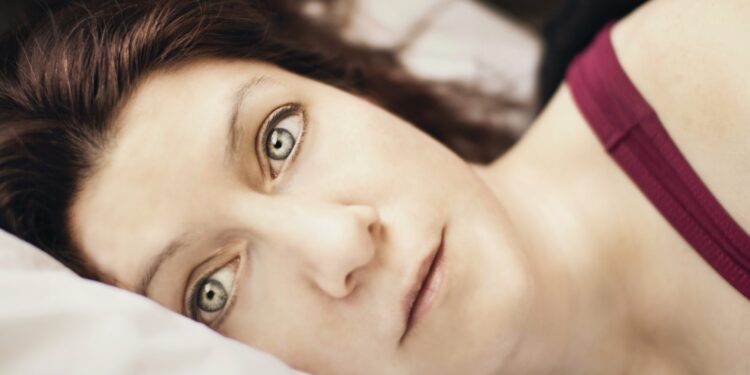Credit: Unsplash/CC0 Public domain
Women sleep less, wake up more often and get less restful sleep than men, according to a new animal study led by researchers at the University of Colorado Boulder.
The results, published in the journal Scientific reportsshed new light on what may be driving sleep differences between men and women and could have broad implications for biomedical research, which for decades has focused primarily on men.
“In humans, men and women exhibit distinct sleep patterns, often attributed to lifestyle factors and caregiving roles,” said lead author Rachel Rowe, assistant professor of integrative physiology. “Our results suggest that biological factors may play a larger role in these sleep differences than previously thought.”
Sleep research has exploded in recent years, with thousands of animal studies exploring the impact of lack of sleep on the risk of diseases like diabetes, obesity, Alzheimer’s disease and immune disorders, as well as as the impact of these diseases on sleep. Meanwhile, mice have often been the first to be tested to see if new drugs, including sleep medications, work and what their side effects are.
But many of these results may have been skewed due to a lack of female representation, the study suggests.
“Essentially, we found that the mouse strain most commonly used in biomedical research has sex-specific sleep behavior and that failure to properly account for these sex differences can easily lead to misinterpretations of the data ” said first author Grant Mannino, a graduate who holds degrees in psychology and neuroscience and was named the College of Arts and Sciences’ Outstanding Undergraduate Student in May.
How do mice sleep
For the non-invasive study, the authors used specialized cages lined with ultra-sensitive motion sensors to assess the sleep habits of 267 “C57BL/6J” mice.
Males slept about 670 minutes total per 24-hour period, about an hour more than female mice. This extra sleep was non-rapid eye movement (NREM) sleep, a restorative sleep where the body works to repair itself.
Mice are nocturnal and are “polyphasic sleepers”: they nap for a few minutes before waking up briefly to examine their environment, then resume their sleep. According to the study, women have even shorter sleep periods – essentially, their sleep is more fragmented.
Similar sex differences have been observed in other animals, including fruit flies, rats, zebrafish and birds. Evolutionarily, this makes sense.
“From a biological perspective, it could be that females are designed to be more sensitive to their environment and to be aroused when they need to be, because they are usually the ones caring for the young,” Rowe said . “If we slept as hard as the males, we wouldn’t advance as a species, would we?”
Stress hormones like cortisol (which promotes arousal) and sex hormones likely play a role. For example, women tend to report poorer sleep during the period of their menstrual cycle when estrogen and progesterone are lowest.
Some have theorized that women inherently need less sleep.
“For me the question is, are we creating too much stress on ourselves because we don’t sleep as much as our husband or partner and think our sleep is poor when in reality it’s a normal sleep profile for ourselves? » Rowe said.
The authors hope their findings will inspire more research into underlying biological differences. More importantly, they hope the study will prompt scientists to reevaluate how they conduct research.
Progress made but more work to be done
In 2016, the National Institutes of Health began requiring scientists seeking funding for animal studies to consider “sex as a biological variable.” Progress has been made, but research has shown that gender bias still exists. And this can have real consequences, the authors believe.
When they simulated a sleep treatment that worked best in women, they found that it was only accurately reflected if the sample size was composed equally of men and women.
Bottom line: If women are underrepresented, the medications that work best for them may seem ineffective, or the hardest-hit side effects may go unnoticed.
“The journey from lab to bedside spans decades and often products that work in animals fail when they get to clinical trials. Does it take so long because sex n is not sufficiently taken into account?” » Rowe said.
The authors encourage researchers to include both sexes equally when possible, analyze data on men and women separately, and reevaluate previous studies that underrepresented women.
“The most surprising finding is not that male and female mice sleep differently. It’s that no one has completely demonstrated it until now,” Rowe said. “We should have known this well before 2024.”
More information:
Grant S. Mannino et al, The importance of including both sexes in preclinical sleep studies and analyses, Scientific reports (2024). DOI: 10.1038/s41598-024-70996-1
Provided by University of Colorado Boulder
Quote: Women sleep less and wake up more frequently than men, which may have broad implications for medical research (November 20, 2024) retrieved November 20, 2024 from
This document is subject to copyright. Except for fair use for private study or research purposes, no part may be reproduced without written permission. The content is provided for informational purposes only.



